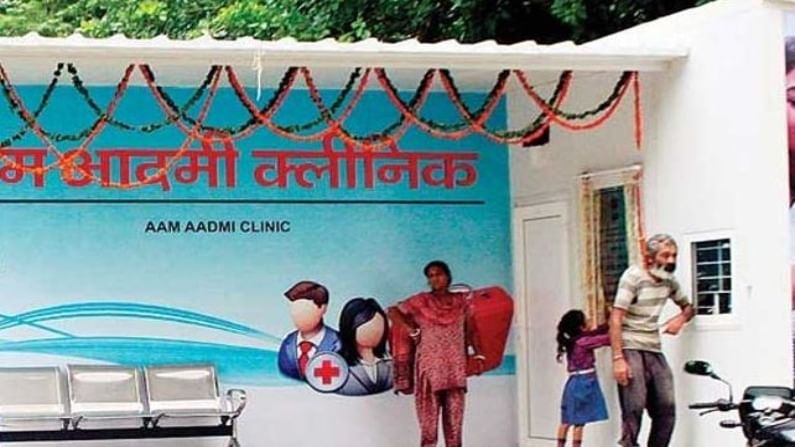Covid-19 pandemic punctures hype around Delhi's feted Mohalla Clinics
Mohalla Clinics are a far cry from the primary health centres one finds in Kerala and Tamil Nadu

Delhi’s Mohalla Clinics or neighbourhood health centres, which were hailed even by newspapers like the Washington Post, have failed the Covid-19 test.
“What good is it if it can’t be used in this pandemic?” observed the two Delhi High Court judges, who were hearing a batch of 17 writ petitions on May 4 that sought directions to the central and state governments to ensure adequate supplies of medical oxygen. “If you have created this infrastructure, what is the real worth of it?” the judges asked.
Chetan Sharma, the Additional Solicitor-General, said there were about 750 clinics, including Mohalla Clinics, run by the Delhi administration. There was no reason, he told the court, why they should not be used to deal with the surge in Covid-19 cases, at least for the purpose of disseminating information to the public and doing preliminary investigations.
The Delhi government’s standing counsel Rahul Mehra said the aspect of Mohalla Clinics being used for Covid-19 management would be “expeditiously considered” in consultation with the Indian Council of Medical Research (ICMR) and a report filed within two days.
Coming up short
Mohalla Clinics were supposed to be the first line of defence in Delhi’s public healthcare system. They are accessible, mostly running out of hired premises in congested neighbourhoods. The assurance of reliable advice from qualified doctors made them quite a draw with poor patients, who would otherwise go to cheap quacks. Wait time of half-an-hour to more than an hour at the clinics testified to their popularity. In some locations, the clinics would remain open well past their closure time of 1 pm. The provision of free medicines and over 200 diagnostic tests enabled poor patients to treat illnesses at the incipient stage rather than neglect them.
The clinics were small with just two rooms, one of which was for the doctor and their assistant. Samples were collected on site but the testing was outsourced to a private agency. For services like X-rays and ultrasounds, patients were referred to polyclinics. The disease profile of patients, which the clinics collected and uploaded via apps on smartphones was helpful in alerting the government to the emergence of diseases like malaria, dengue and chikungunya. Preventive health strategies could be devised by analysing the data. (Though in Delhi, the fragmentation of authority and responsibilities between the central, state and municipal administrations with competing political interests made a meeting of minds for a common purpose harder to achieve that in states).
Unlike in government hospitals with salaried doctors, nurses and attendants, the doctors at the Mohalla Clinics had an incentive to see more patients because they were paid per patient. (Conversely, it encouraged assembly-line consultation with doctors minimising the time spent with patients). Not all doctors were bent on income maximisation. At the Mohalla Clinic in West Delhi’s Todapur, R Pal said he got “professional appeasement” as a community doctor, which eluded him in his pre-retirement stint with the Central Government Health Service. (When last spoken to, Pal had moved to Vridavan to spend his last years in meditation and contemplation).
Hyped
Mohalla clinics were touted as the lowest rung in a three-tier public healthcare system, with polyclinics in between and tertiary hospitals at the top. They were supposed to mirror the three-tier system of primary health centres, community health centres and district hospitals in rural areas. But they don’t even come close.
“Mohalla Clinics are under-designed and under-resourced,” says T Sunderaraman, who until 2014, was executive director of National Health Systems Resource Centre, the agency that provides technical advice to the National Rural Health Mission. They might provide medical advice, drugs and diagnostic services, but these do not measure up to the term “primary healthcare”. The pandemic has put them through a “stress test,” he says.
To be effective in the control or an infectious disease like Covid-19, Mohalla Clinics should have been involved in community outreach and contact tracing. They should be able to deal with cases that do not need hospitalisation. If a patient’s condition deteriorates, the team at the clinic should be able to arrange ambulances and hospital beds, or provide information about where these are readily available. This requires the three tiers to be integrated in a feedback loop. A public healthcare system should have built-in redundancies to deal with surges in infection. Just-in-time might work on car assembly lines but not where life is at stake.
The Delhi High Court judges and the lawyers assisting them seem to have been misled by the hype. Mohalla Clinics are a far cry from the primary health centres one finds in Kerala and Tamil Nadu. With their stripped-to-the-bone facilities, they could in no way be the first line of defence against an infection that has even stretched the healthcare systems of advanced countries. Mohalla Clinics are just that – neighbourhood clinics.
If you have created this infrastructure, what is the real worth of it? What good is it if it can’t be used in this pandemic? The Delhi High Court observed.
Mehra assured the court that the said aspect will be expeditiously considered by the GNCTD and a status report will be filed in this regard within two days. Let the ICMR suggest the manner in which the Mohalla Clinics could be put to use for Covid management.
(Vivian Fernandes is a senior journalist and former editor. Views expressed are personal)